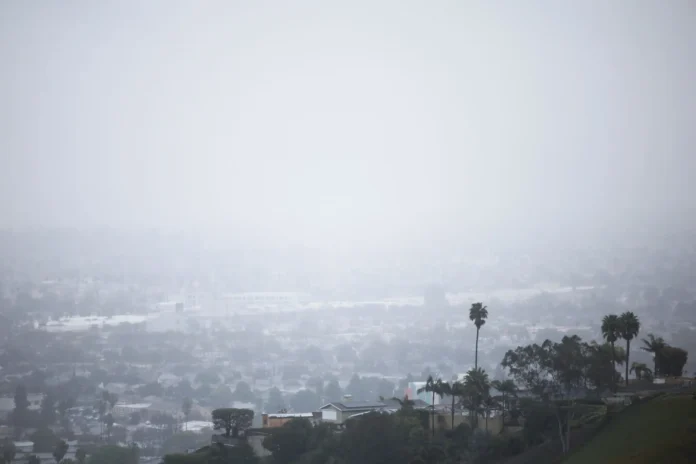Heavy rain poured across Southern California on Thursday, flooding roads and raising fears of landslides in wildfire-scorched areas. But despite the warnings, the storm didn’t cause as much destruction as officials had feared.
Forecasters were especially worried about places recently burned by wildfires. When fire scorches the ground, the soil becomes almost waterproof, making it easy for rain to send mud and debris racing downhill. Officials had their eyes on Malibu and Pacific Palisades—both hit hard by the Palisades Fire last month—as well as Altadena, where the Eaton Fire destroyed thousands of structures. The National Weather Service issued flash flood warnings in those areas, affecting about seven million people across Los Angeles County.
For a while, the storm looked like it could be a disaster. At one point, muddy water rushed over parts of the Pacific Coast Highway, forcing officials to shut it down. Strong winds also swept across Southern California, with gusts topping 77 mph in some places, knocking down carports and awnings in Ventura County. More than 100 homes in Los Angeles were under mandatory evacuation orders due to fears of landslides. But by Thursday evening, the worst had passed without major damage.
Beyond LA, officials were also on high alert. In Orange County, residents near the burn scar of the Airport Fire were warned to prepare for possible evacuation. In San Bernardino County, mountainous areas faced evacuation orders due to concerns about mudslides. Up north in Santa Cruz County, officials ordered evacuations early Thursday morning because of rising creek levels, but lifted them by the afternoon.
Meanwhile, in the Sierra Nevada, the storm turned into a heavy snowstorm, making roads nearly impossible to navigate. Interstate 80 was shut down due to dangerous whiteout conditions, leaving drivers stranded.
For people who had already lost their homes in the recent fires, the storm was just another challenge. In Altadena, 69-year-old Makis Dasigenis, who had fought to save his home from the Eaton Fire, said the nonstop stress was wearing everyone down. “We’re dealing with insurance, trying to clean up, and now this rain,” he said. “It’s exhausting, and it’ll take months before it’s over.”
In Santa Barbara County, where deadly mudslides hit in 2018, emergency teams had been preparing since last week. Officials checked in on people living in risky areas, including those in homeless encampments near creek beds and underpasses.
Across California, officials worked to stay ahead of the storm. The Governor’s Office of Emergency Services positioned resources across 14 counties, from Sonoma in the north to San Diego in the south. After years of intense storms and wildfires, California communities have learned to stay ready for whatever comes next.





